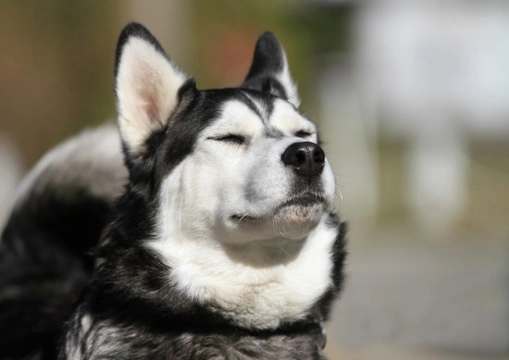
Methods to teach an unruly or dominant dog who is really in charge!
Regardless of the size or build of your favourite pooch, any dog can potentially get too big for their boots and decide that they are the one in charge within your family dynamic! This is actually much more often a problem with smaller dog breeds, as their potentially dominant tendencies can easily be overlooked, due to their small size! However, any type of dog might see themselves as the alpha if they do not receive strong leadership and boundaries, and some of the most intelligent, independent dog breeds are very apt to do this. The Siberian Husky, Border Collie, Japanese Akita and the Jack Russell are just a few of them!
If your dog is unruly or dominant, this can create a problem in all sorts of different ways. They are likely to be disobedient problematic and a general pain to handle on occasion, as well as even potentially going as far as snapping or aggression if they do not get their own way. This can be both stressful and tiring for the owner, and take a lot of the joy out of owning the dog.
In this article, we will look at some simple ways in which you can curb the behaviour of an unruly or dominant dog, and teach them their correct place in your pack. Read on to find out more!
Keep your dog physically low down
A dog that is dominant or unruly needs to have it made clear to them that they are not your boss or your equal, and literally, to know their place. In order to keep them below you psychologically, you should also keep them below you physically, to reinforce the message. This means keeping your dog off the furniture and beds, and not treating them as equals in terms of the sleeping or seating arrangements. Sharing your physical space with your dog blurs their boundaries in terms of knowing where they fall in the pecking order.
Keep your dog on the floor, with a bed on the floor of the room that you sit in, and keep them away from seating etc., that places the dog at the same eye level as the humans. Do not allow jumping up or standing up on their back legs, or anything else that gives the dog a physical boost in terms of meeting you at your level.
When your dog is unruly or makes a bid for dominance, put them back in their place by instructing them into the “down” position, making them lie down on the floor. This is particularly important to do if your dog is snappy or bossy with a person; make your dog yield and lie in front of said person, to neatly reinforce the message that that person falls above them in the pack.
Keep yourself up high
It is pointless to keep your dog at floor level if you simply go and sit on the floor with them, placing you back on an equal footing! You should always sit and sleep above your dog, and not lie or sit on the floor with them, in order to provide a clear if invisible distinction to your dog between their level and your level.
Keep your dog controlled when walking
Walking an unruly or dominant dog can be a real pain, and if it is very stressful or difficult, can even make you dread walking your dog at all! Don’t give into the urge to simply let your dog get away with things because it is easier; you will only make things harder for yourself further down the line!
Keep your dog on a lead, make them walk beside or behind you, and check your dog if they are apt to pull or lunge off. Always make your dog wait for you to go through gates and narrow passage first, and do not permit them to push in front of you. Keep bringing them back and checking them, and then reward them when they finally comply.
Rewarding your dog
It is important to check or ignore negative behaviour, but to praise your dog warmly and reward them when they are good. This will reinforce the message to your dog that being good gets them better rewards than being bad! Feed your dog after exercise, when they are calm and responsive and not apt to be particularly pushy or full of beans. Your dog will learn that you provide their resources, and that they need to display good manners in order to get them!
Wait until your dog is good and responsive before feeding, but never withhold food from your dog as a punishment or training aid.
Bonding and interaction with your dog
Pick the types of games that you play with your dog carefully, in order to get your dog into the right mindset to work with you rather than battle against you. This means that rough and tumble play is out, as is anything that becomes a power-play, such as tugging on a rope with your dog.
Instead, play games such as fetch or hide and seek, to get your dog working with you and looking to you for direction, instead of seeing play as a fun battle to have with you.



